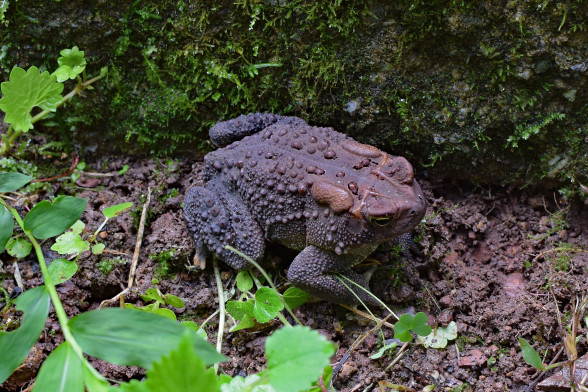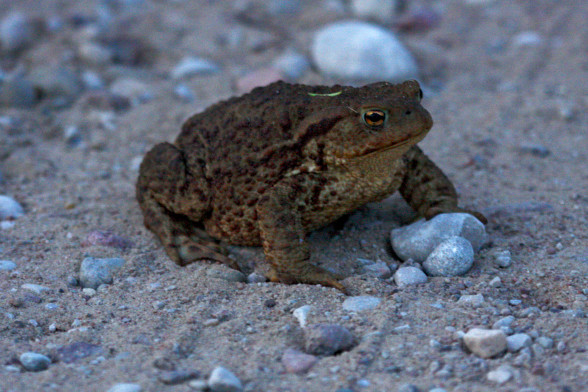
Common toad
Habitat
Toads usually choose large ponds, quarries or even small lakes with constant water levels. It is difficult to observe because it sleeps hidden most of the day. During the day, they stay under various objects (firewood, stones, etc.), under plants or partially buried in the ground. The toad wanders around during the night hunting, but returns to its hiding place in the morning. It may return to the same hiding place for several months. It only stays in water pools during the spawning season. Spawns in lakes, ponds, large puddles, streams with relatively clear water. Overwinters in rodent burrows, under stones and in cellars.
Diet
Toads become active in the evening and spend the whole night feeding on various invertebrates; larger individuals can also ingest small vertebrates. Favoured food items include slugs, woodlice, beetles, butterfly larvae, flies, earthworms and small mice. Smaller prey is licked with the tongue and larger prey is caught in the jaws. As the toad has no teeth, the prey is swallowed. It does not distinguish its prey, but reacts to any small, dark, moving object.
Important and interesting facts
In Latgale Region you may encounter 2 species of toads: the European (or common) toad and the green toad.
The head of the common toad is broad, with a large mouth and no teeth. The skin is dry and warty. There are large parotid glands on the sides of the head. Smaller venom glands are scattered over the skin. Predatory animals hunting toads usually leave the skin and head with parotids intact.
The hind legs are short compared to frogs’ legs. The feet are not webbed.
Toads can see very well in the dark and hunt using their eyesight. Toads shed their skin periodically, but they do not slough it off and leave it behind. Toads actually push the shedding skin into their mouth and eat it.
It spends the winter in hiding, hibernating.
If startled, a toad will take a defensive posture, crouching on stiff legs and trying to look as big as possible.
Its enemies include voles, hedgehogs, rats, cats, herons, crows and various birds of prey. Birds avoid eating the toad's skin; they tear the toad's stomach open with their beaks and eat only the guts. Toad skin is also poisonous, so fish do not eat toad tadpoles.
Toads can often be seen in gardens and near human settlements. Various folk beliefs and myths have developed about it which are not true. The toad does not drink milk, nor does it eat strawberries, because amphibians do not consider immovable objects as food. The presence of a toad in a strawberry bed is only a sign that it has come to hunt for slugs. There is also no basis for the belief that the toad causes warts on the hands. The toad is a very valuable garden inhabitant, protecting crops from a wide range of pests.
Information sources: latvijasdaba.lv, Wikipedia
Photos: redzet.eu, pixabay.com


